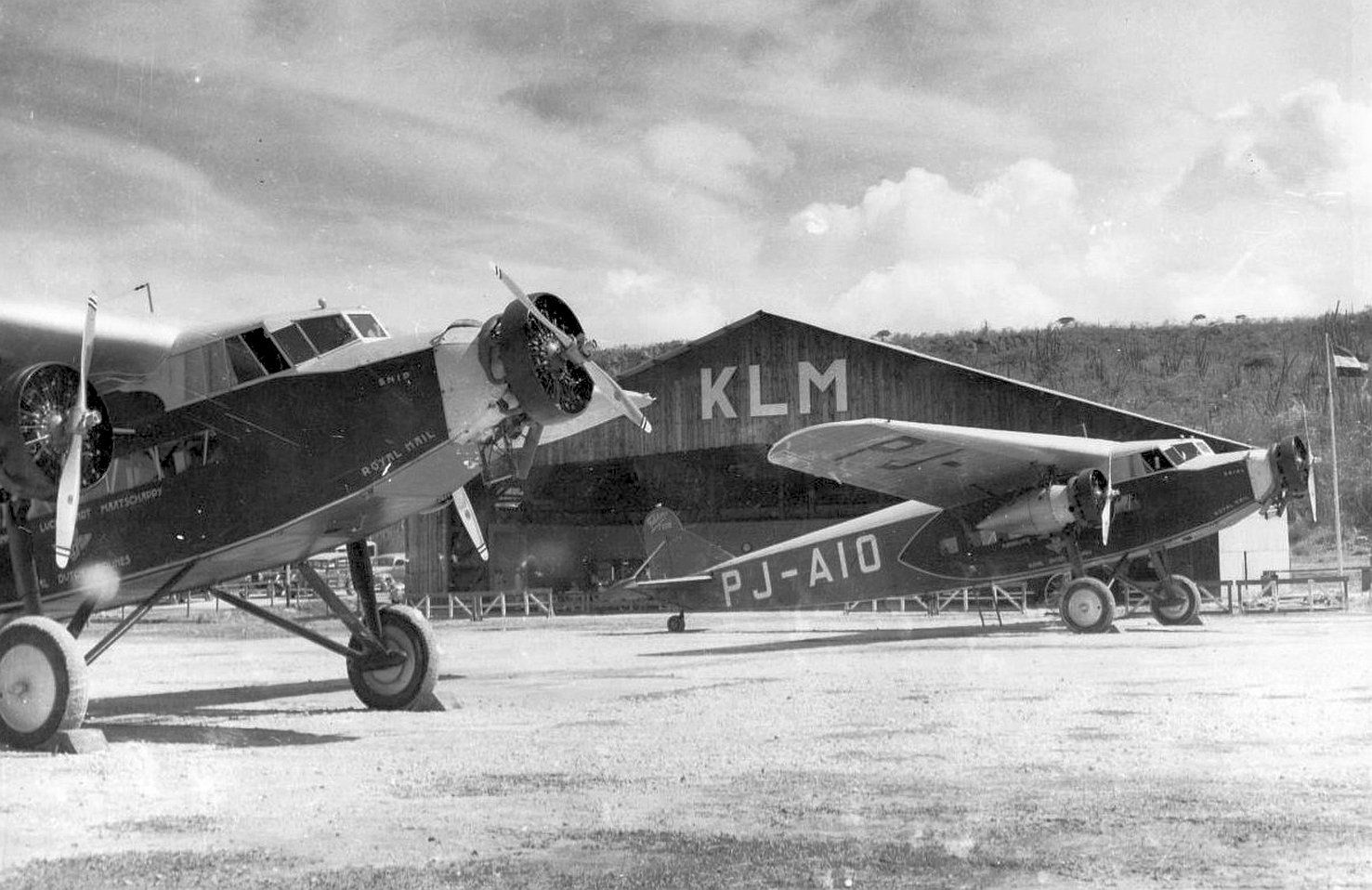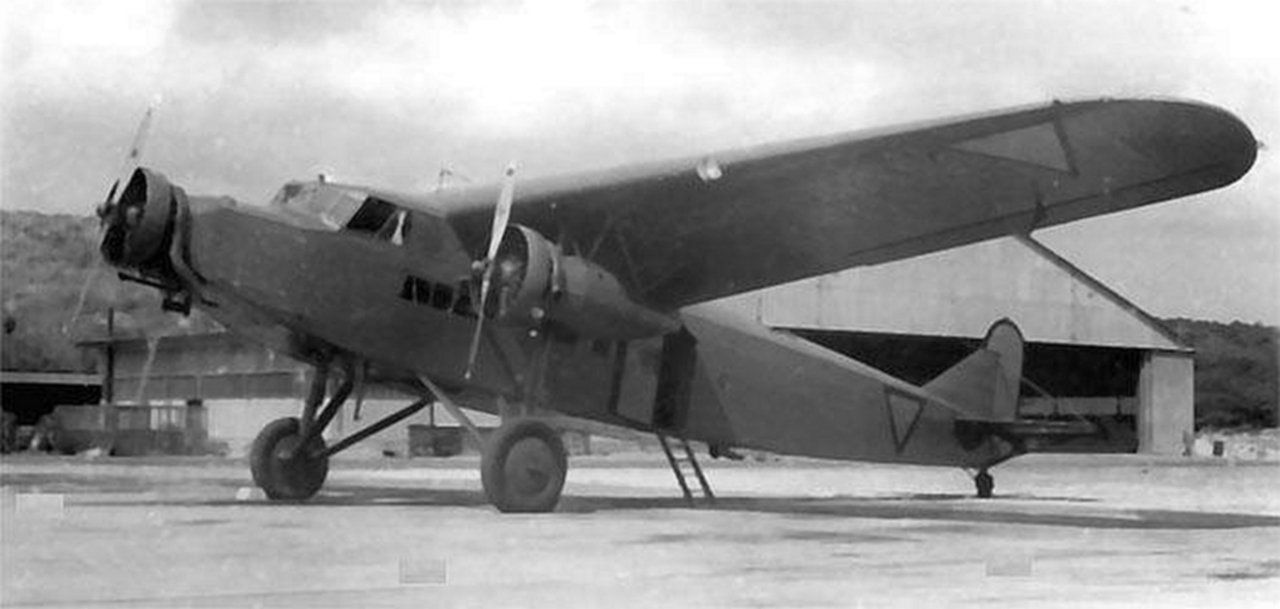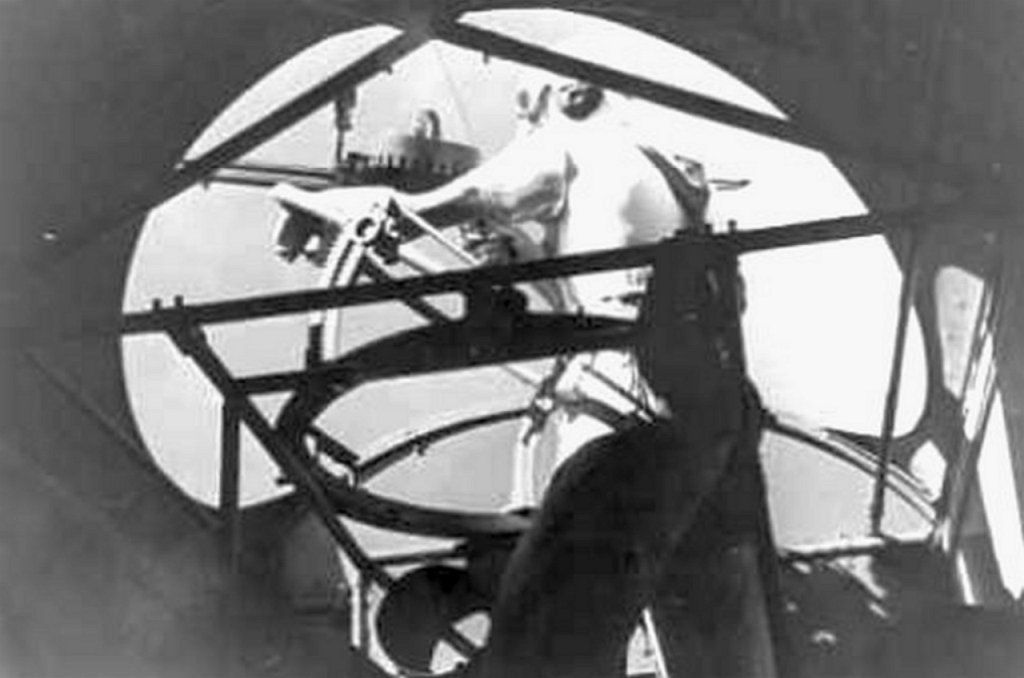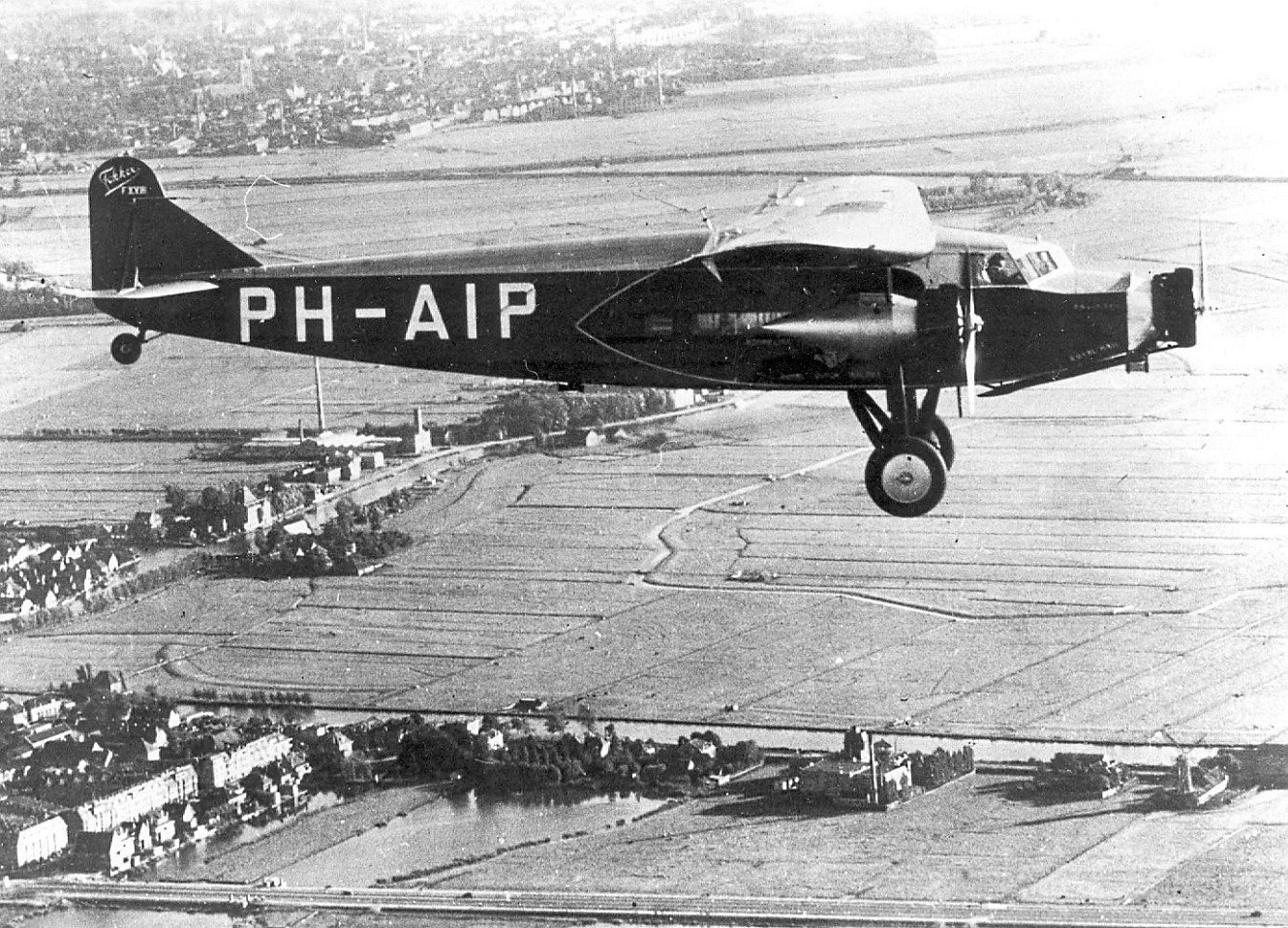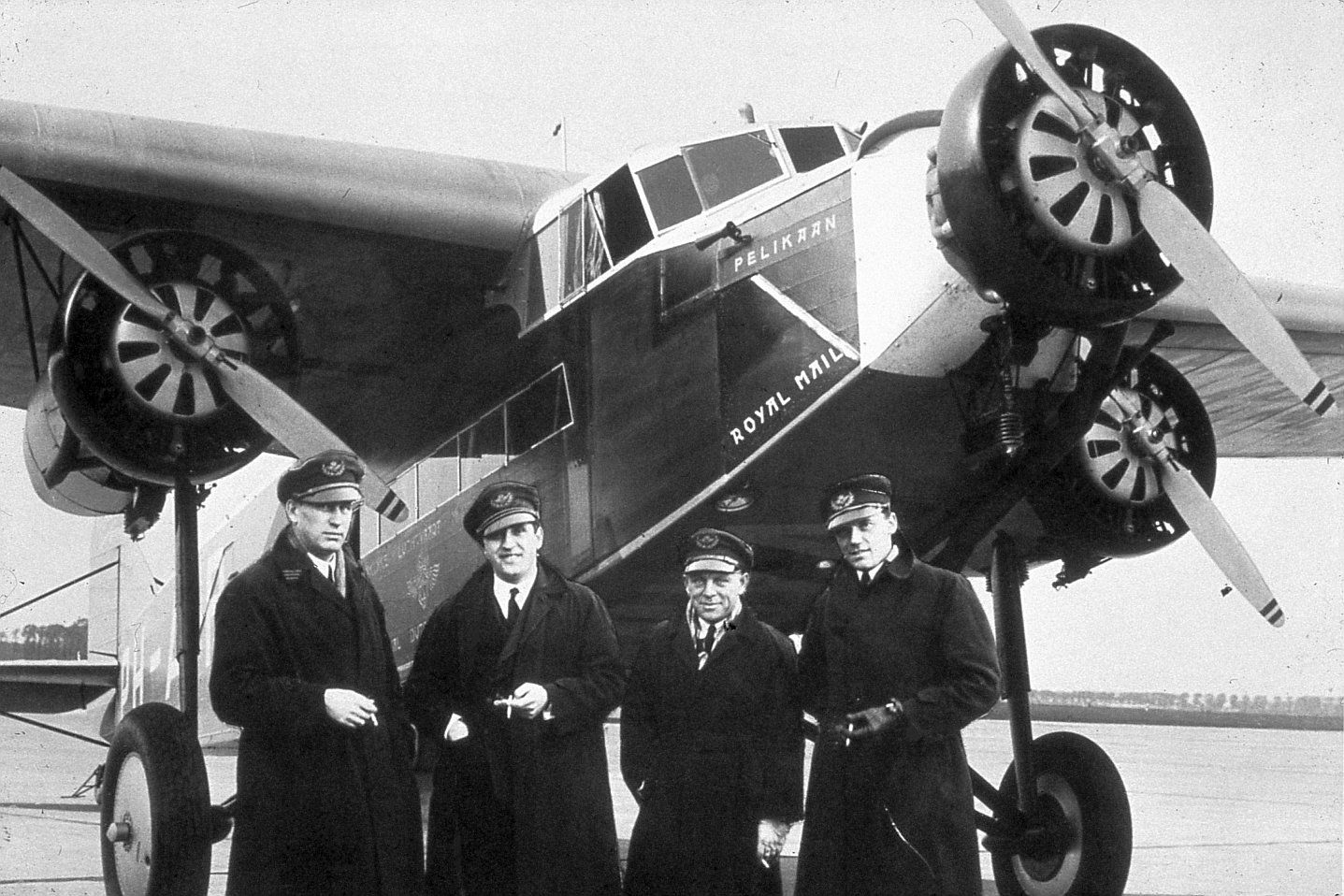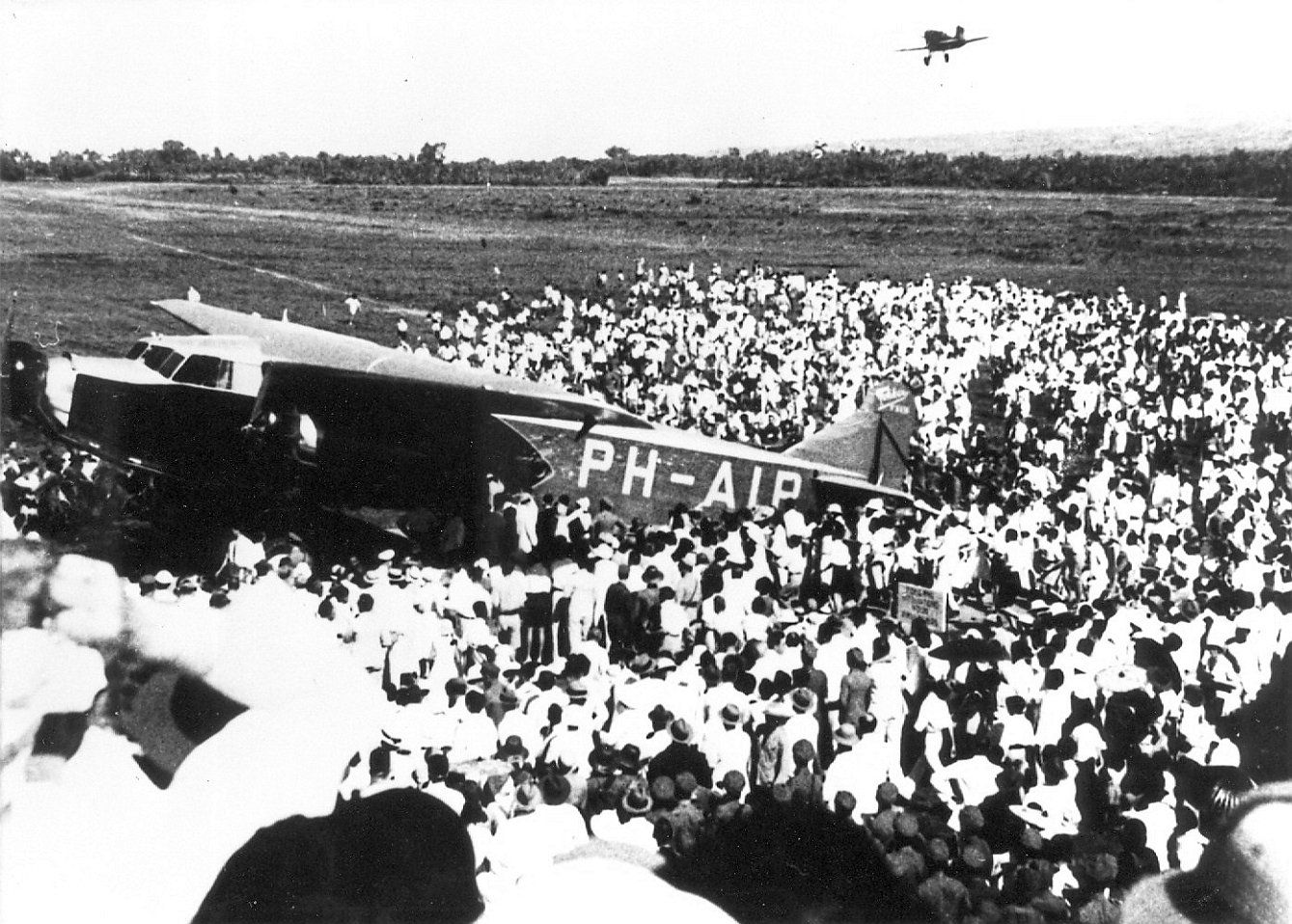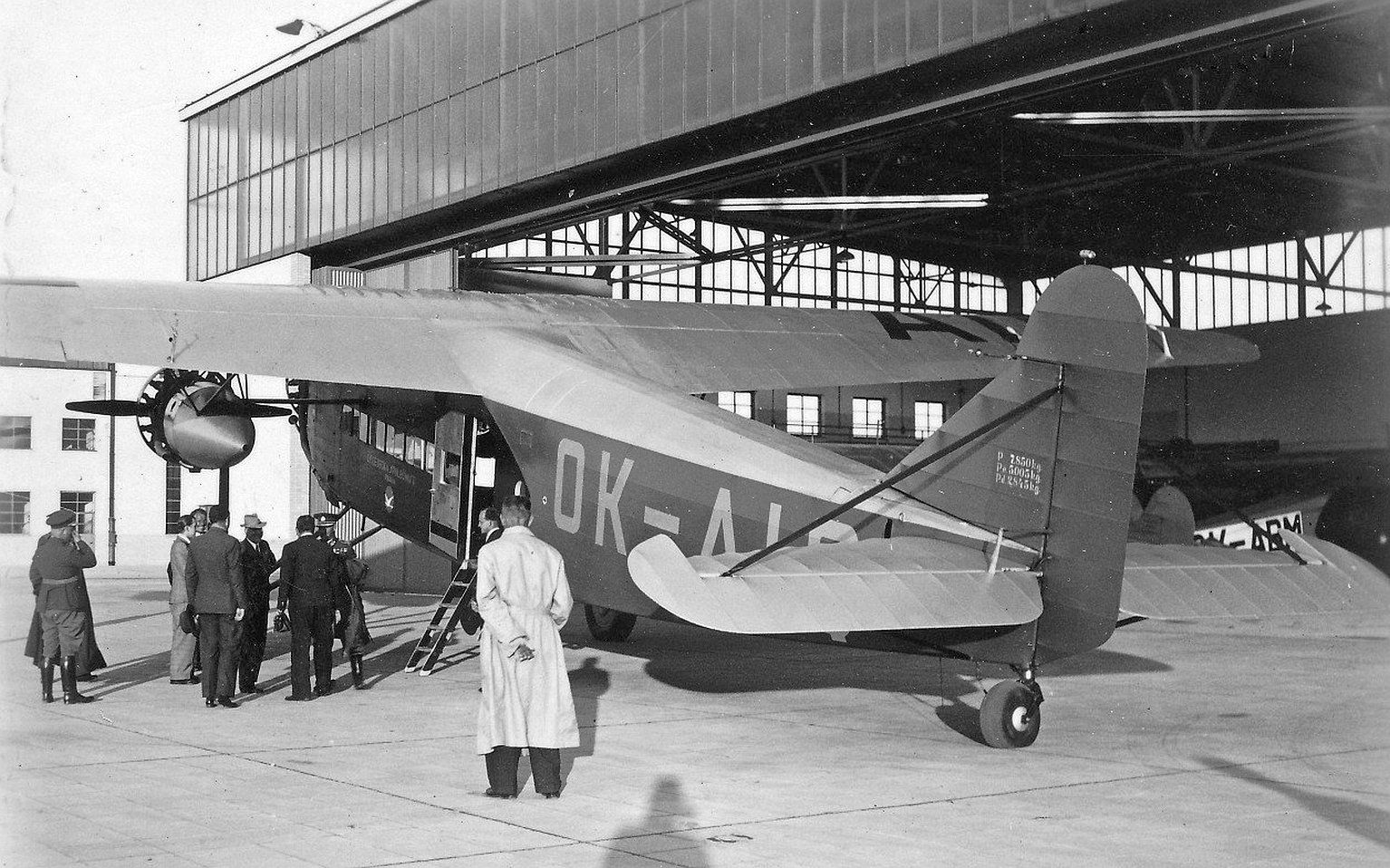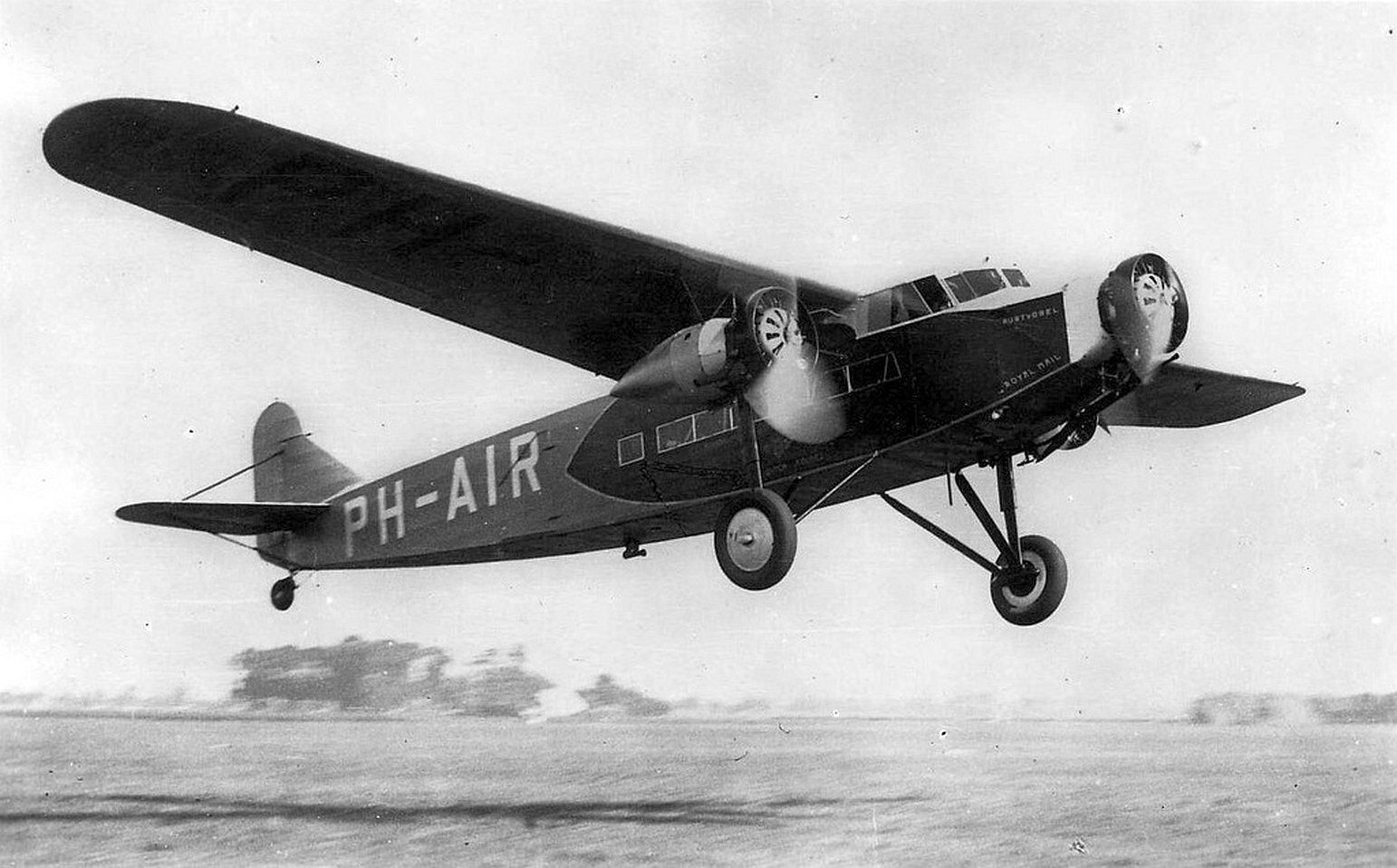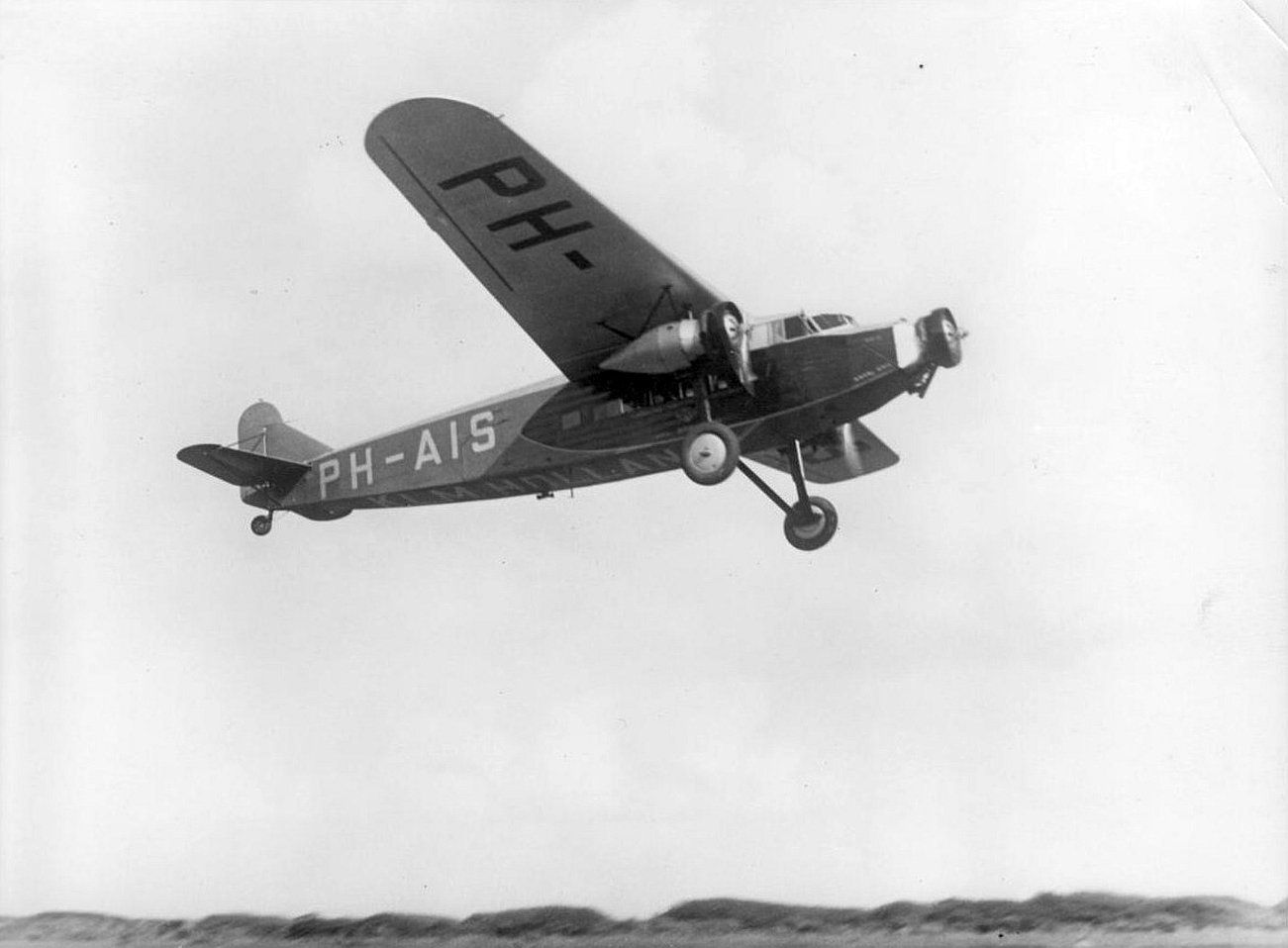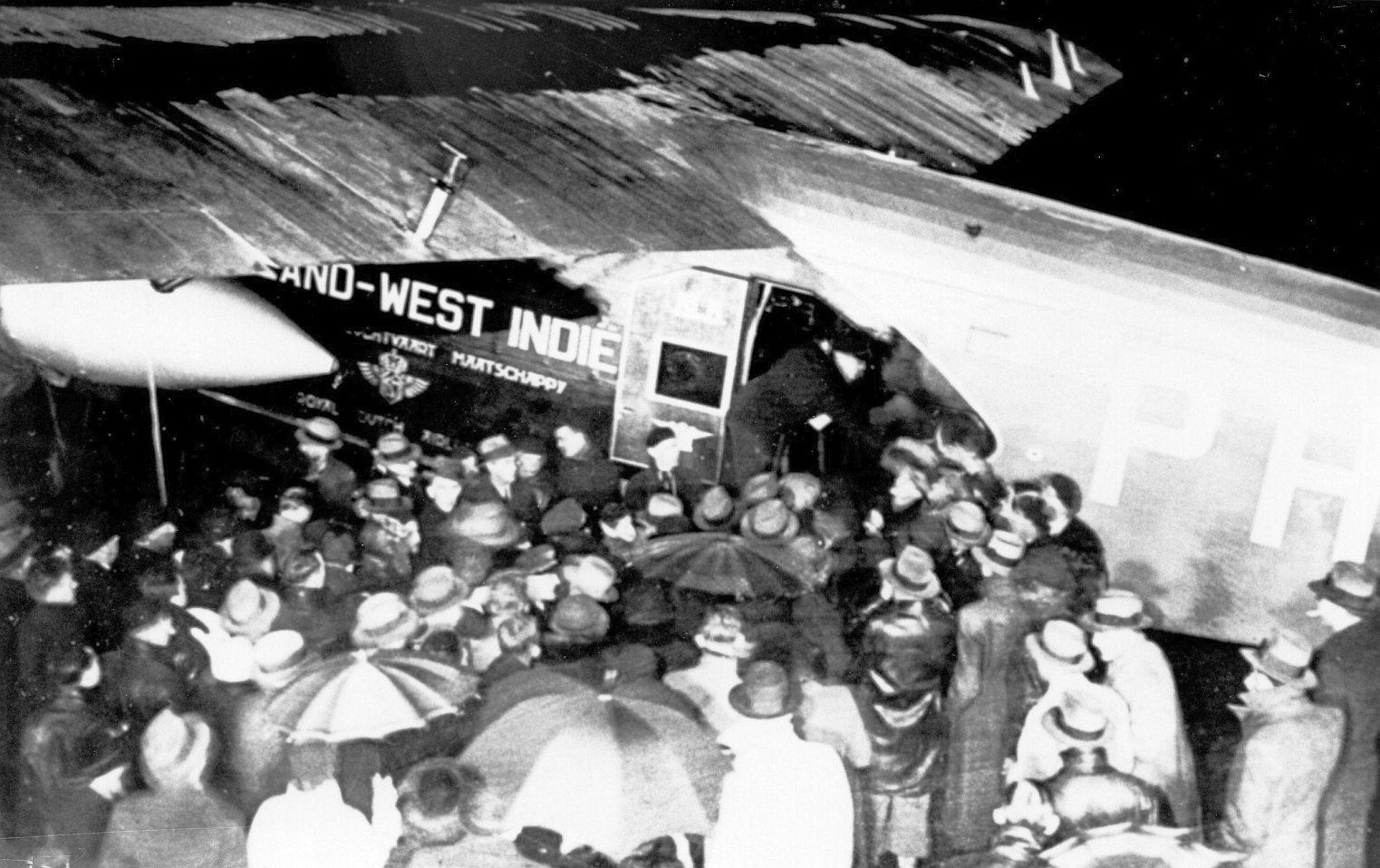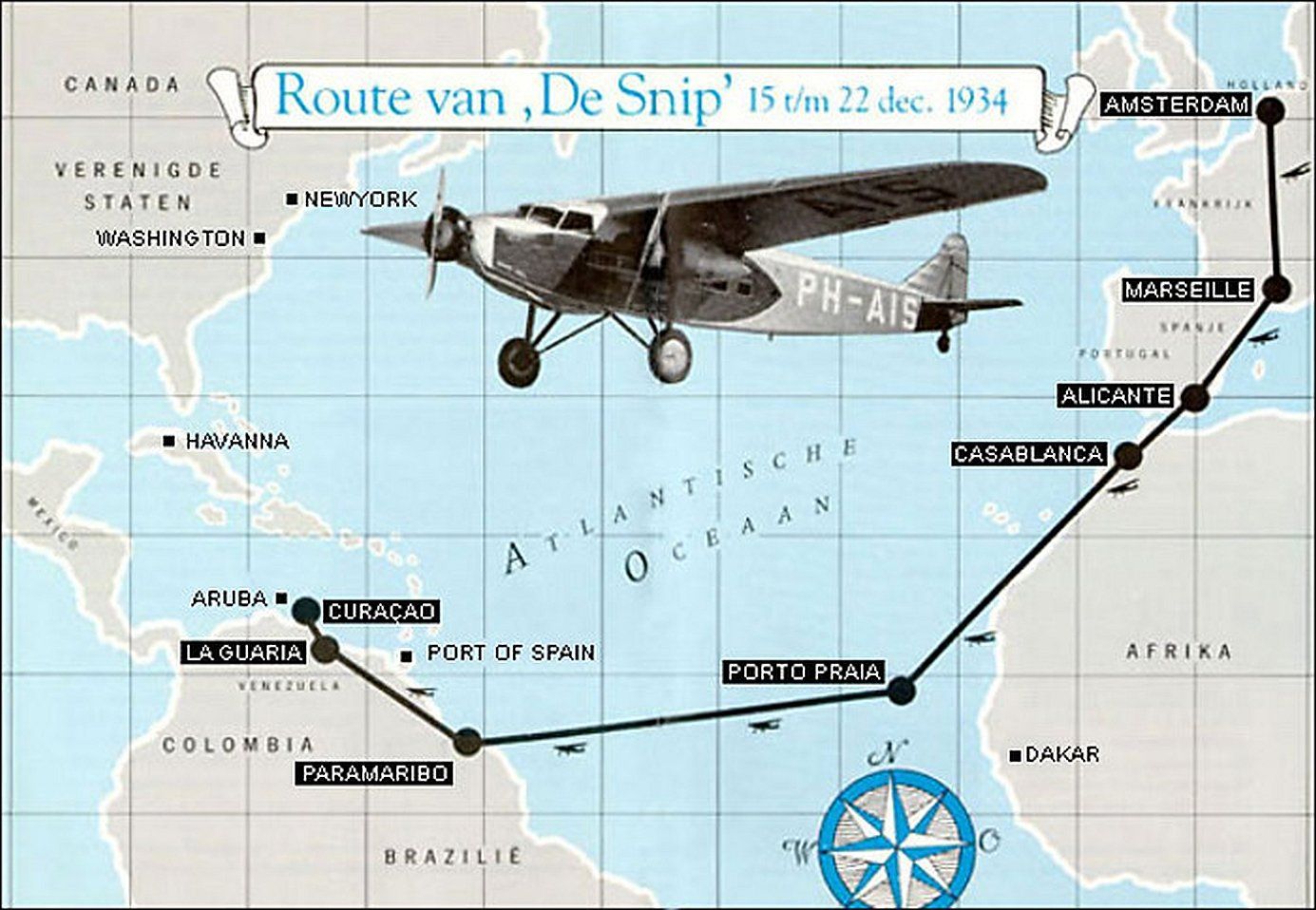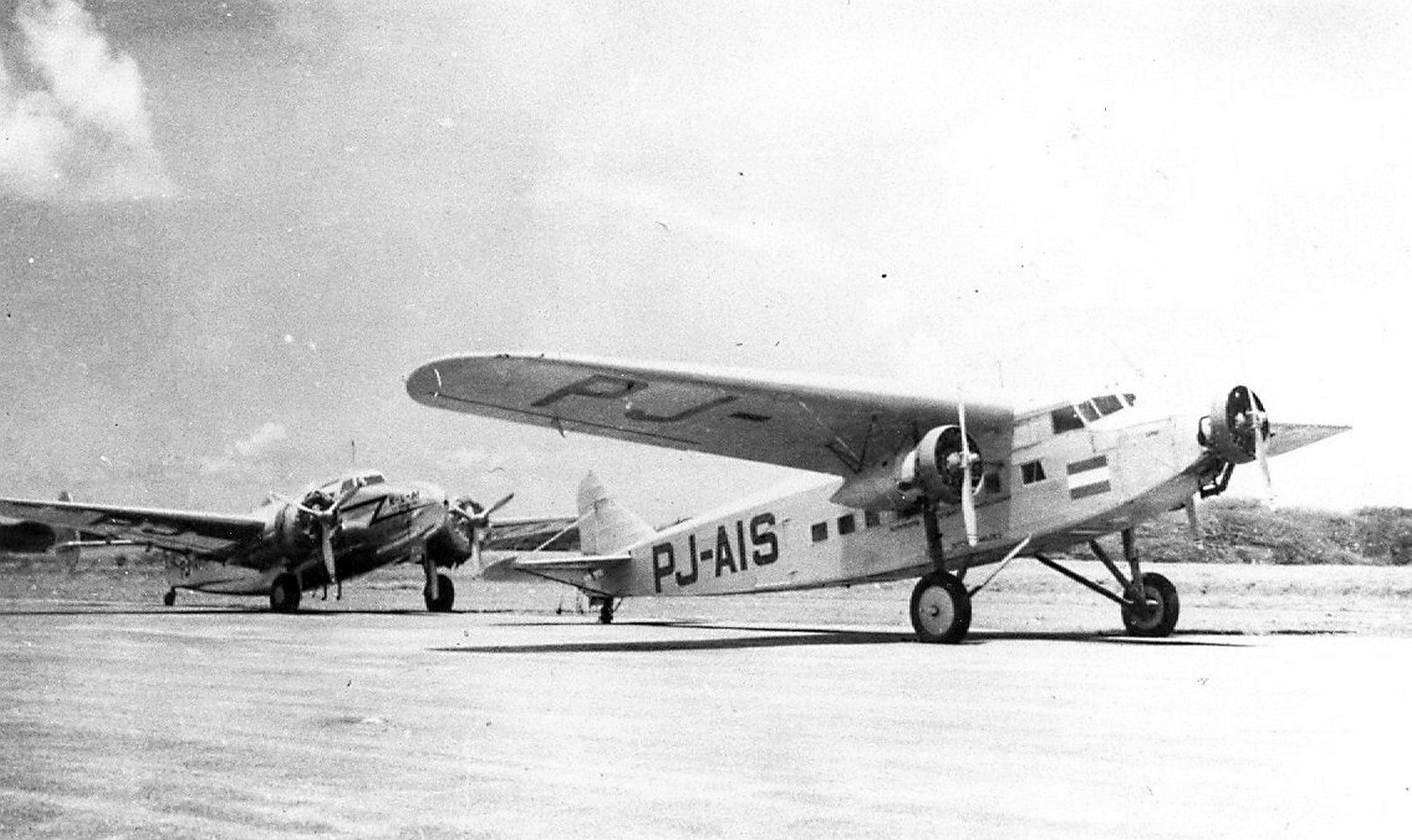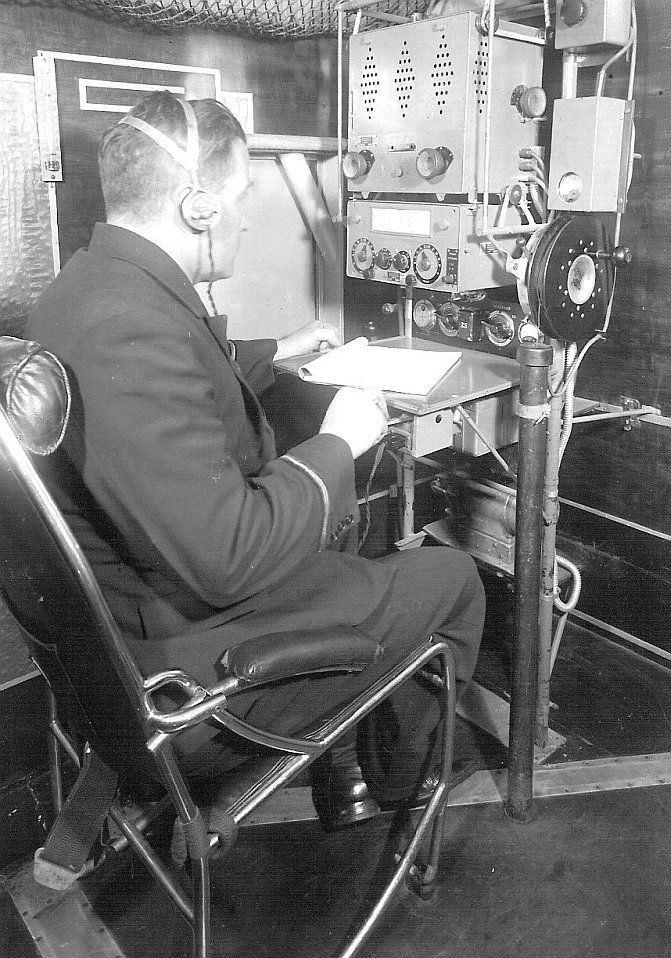Fokker F.XVIII
Soon after the F.XII, the F.XVIII was constructed at Fokker in 1932.
This happened (again) at the request of KLM, which wanted to increase the quality of service and increase the speed to reduce flight times on the Indies routes. The result was a three-engine high-wing aircraft that could carry 16 passengers. Compared to the F.XII, there were various differences: The configuration of the wings were improved, control cables were moved to the inside of the fuselage and the alternator was placed in a different location.
The fuselage was lengthened and the top was rounded. This was done to create less resistance to increase speed.
The five aircraft produce by Fokker, were all equipped with three Pratt & Whitney Wasp engines with 525 hp. The KLM bought all five aircraft, some of which were later resold to other operators.
Two of the F.XVIII aircraft made aviation history. The Pelikaan and the “Snip”. The PH-AIP Pelikaan left on December 18th, 1933 for an expedited Christmas return trip Batavia.
The crew, led by Captain Iwan Smirnoff, managed to complete the flight in record time. On December 22nd,1933, the aircraft arrived in Batavia, and four days later it departed for its return flight. Despite bad weather, the return trip was made faster and in the evening of December 30th , 1933 the Pelikaan, after four attempts landed at a cold and foggy Schiphol. More than 20,000 visitors had flocked to honour the four crew members, consisting of Iwan Smirnoff, Piet Soer, Cornelis van Beukering and Sjef Grosfeld. In 1934 KLM made the first transatlantic flight with the PH-AIS “Snip”. (see article on the page "Milestones")
Two aircraft were transferred to KLM's West Indies Division) at Willemstad, Curaçao for regional services in the Caribbean in 1936. One of these was PH-AIS Snip, later PJ-AIS, the other was PH-AIO, later PJ-AIO, originally named Oehoe ("Owl"), but renamed Oriol ("Oriole") since the Owl was regarded as unlucky in the local culture. These aircraft served on routes between Curaçao and Venezuela, Dutch Guyana (now Suriname), Columbia and Trinidad as well as inter-island services to Aruba, Bonaire and Saint Maarten.
PJ-AIO was leased to the Netherlands West Indies colonial government in June 1940 and converted by KLM engineers into a maritime patrol aircraft for use by PJ-AIO was leased to the Netherlands West Indies colonial government in June 1940 and converted by KLM engineers into a maritime patrol aircraft for use by the Netherlands West Indies Defence Force.
This aircraft was slightly modified, the previously installed fuel tank of the Snip, was now installed on the Oriol. In addition, a gun turret was installed on top of the fuselage. Also an opening was made to create an bombardier's hatch in the bottom of the fuselage, thus allowing light-weight 8 kg bombs to be aimed and dropped by hand. Although many patrols were flown mainly from Hato, Curaçao, no single bomb was ever dropped.
In early 1942 the Oriol was converted back to civilian use beside the still flying Snip.
In 1946 the Oreol was broken-up at Curaçao
Click on the photo to enlarge



